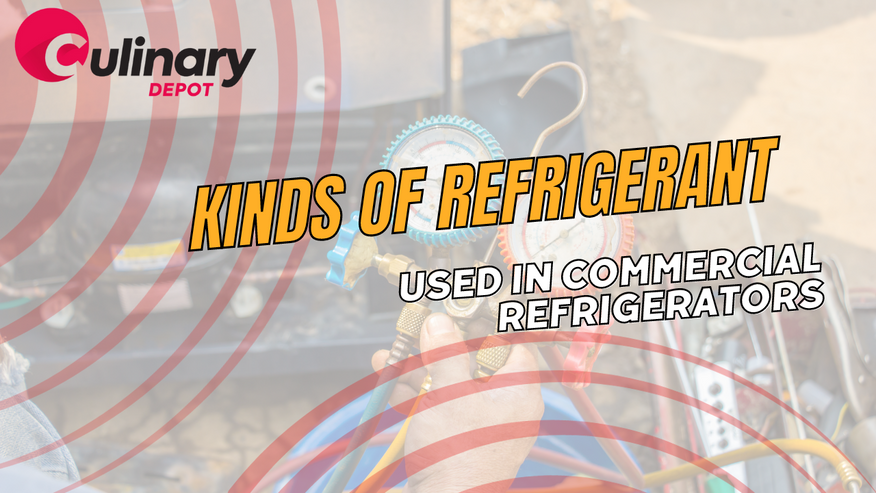Oct 12th 2023 - Team Member
What Kinds of Refrigerant Are Used in Commercial Refrigerators
Refrigerants are the lifeblood of commercial refrigerators, responsible for keeping your perishables fresh and your customers safe. Over the years, the refrigeration industry has witnessed significant changes in the types of refrigerants used. In this informative guide, we will delve into the various refrigerants employed in commercial refrigerators, their environmental impact, and the importance of making eco-conscious choices.
Understanding Refrigerants
The Role of Refrigerants
Overview
- Refrigerants are substances that undergo a continuous cycle of evaporation and condensation within a refrigeration system.
- They play a crucial role in transferring heat, which is essential for cooling and preserving food.
Key Functions
- Absorb heat when evaporating, cooling the interior of the refrigerator.
- Release heat when condensing, expelling it outside the refrigerator.

Environmental Impact
Historical Concerns
- Many older refrigerants, such as chlorofluorocarbons (CFCs) and hydrochlorofluorocarbons (HCFCs), were harmful to the ozone layer.
Current Concerns
- Hydrofluorocarbons (HFCs), while ozone-friendly, are potent greenhouse gases with a high global warming potential (GWP).
- Reducing HFC emissions has become a global priority due to their contribution to climate change.
Types of Refrigerants
Common Refrigerants
R-22 (HCFC-22)
- Once widely used but phased out due to ozone depletion concerns.
- Rarely found in new equipment.
R-134a (HFC-134a)
- A common HFC refrigerant with a moderate GWP.
- Still used in some commercial refrigeration systems.
R-404A and R-407A (HFC Blends)
- Popular HFC blends with varying applications.
- Being phased out in some regions due to their high GWP.
R-290 (Propane) and R-600a (Isobutane)
- Natural refrigerants with low GWP.
- Gaining popularity due to their eco-friendliness.
Emerging Refrigerants
R-744 (Carbon Dioxide)
- A natural refrigerant with very low GWP.
- Used in transcritical CO2 systems, gaining attention for its environmental benefits.
HFO Refrigerants (e.g., R-1234yf, R-1234ze)
- Hydrofluoroolefins (HFOs) with significantly lower GWP compared to HFCs.
- Being adopted as alternatives to HFCs in some applications.
Eco-Friendly Refrigerant Choices
Importance of Eco-Friendly Refrigerants
Reducing Carbon Footprint
- Choosing low-GWP refrigerants helps combat climate change by reducing greenhouse gas emissions.
Regulatory Compliance
- Adhering to regulations and phasing out high-GWP refrigerants is essential for legal compliance.
Long-Term Sustainability
- Eco-friendly refrigerants future-proof your refrigeration systems as environmental regulations tighten.
Conclusion
Understanding the types of refrigerants used in commercial refrigerators is vital for making informed decisions in the food service industry. As environmental concerns grow, the choice of refrigerant can impact both your business's carbon footprint and its long-term sustainability.
While older refrigerants pose significant environmental risks, newer options like natural refrigerants (R-290, R-600a), CO2 (R-744), and HFOs offer eco-friendly alternatives with low GWP. These choices not only align with environmental goals but also ensure compliance with evolving regulations.
By prioritizing eco-conscious refrigerant choices and staying informed about industry trends, you can contribute to a greener, more sustainable future for your commercial kitchen while preserving the freshness of your ingredients and the safety of your customers.

